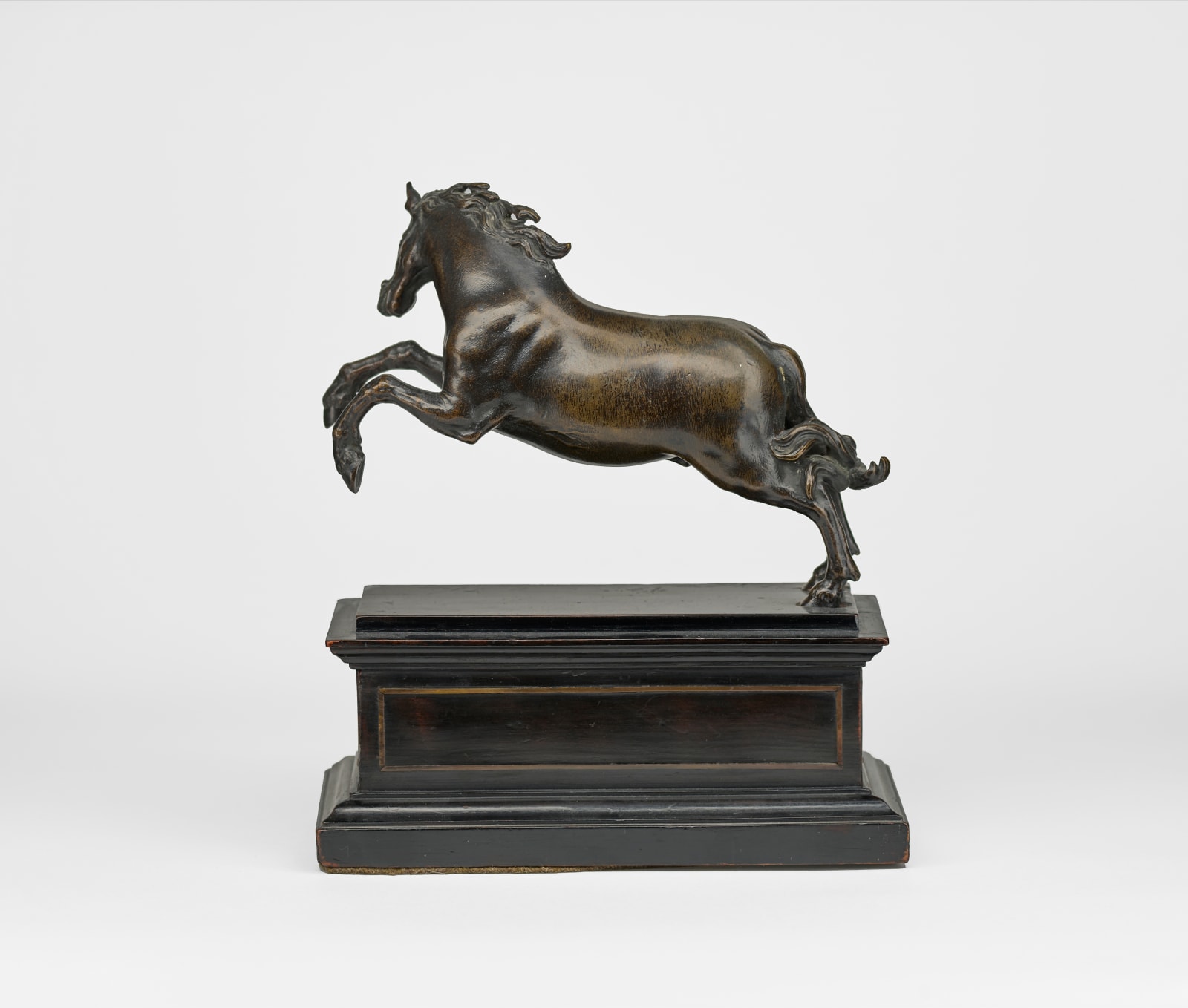Francesco Fanelli (c. 1590-1653)
Francesco Fanelli’s equestrian bronzes were highly celebrated in seventeenth-century England. Patronized by Henry, Prince of Wales and Charles I, Georg, Fanelli appears to have specialized in small scale, darkly patinated bronzes, primarily focusing on equestrian models. The Florentine Fanelli moved to England around 1610, after being recorded in Genoa in 1609. After spending most of his career in England, Fanelli received a pension as sculptor of the King in 1635. He left England in 1642. He is recorded as “Francisco the one-eyed Italian” in the collection of Charles I, who owned thirty-six small bronzes, including a St George and the Dragon and a Cupid on Horseback. Although his statues were recorded in prominent inventories, little is known about his life, not even how he lost his eye. His only known signed work is a powerful bust of Charles II, dated 1640.
Pope-Hennessy first identified this model as a work by Franceso Fanelli in 1953[1]. Casts of this model, and its variant, with a cupid attached to the bare back of the horse, can be found in the Victoria and Albert Museum in London, and the Herzog Anton Ulrich-Museum in Brunswick.
The present prancing horse with its raised forelegs is most likely from the artist’s prolific British period. A “horse full gallop”, mentioned in an inventory of Fanelli statuettes at Welbeck Abbey compiled by antiquarian George Vertue in 1736, likely referred to a bronze of the same composition as our Prancing Horse. Fanelli’s bronze casting was far superior to that available in Northern Europe at the time. Several versions of these statues survive, suggesting that Fanelli used his molds to execute reproductions. Other examples of the lone galloping horse are in The Metropolitan Museum of Art and in the Herzog Anton Ulrich Museum, Braunschweig.
[1] J. Pope-Hennessy, “Some Bronze Statuettes by Francesco Fanelli”, The Burlington Magazine, vol. 95, 1953, pp. 156-162.
Provenance
Collection Bruno DrexlerHis sale, Sotheby's, 3 December 1997, lot 261
Daniel Katz Ltd, London, 1997-1998
Private collection, New York



